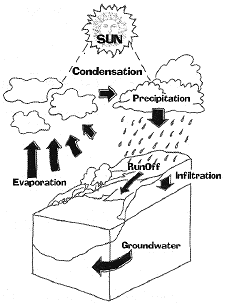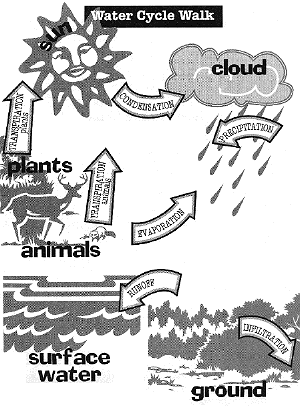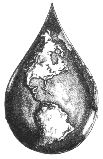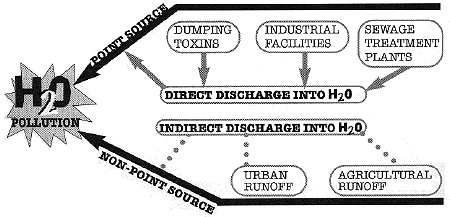
|
Water Quality
How do we measure water quality?
What is clean water?
What is polluted water?
In order to protect human health and aquatic life, government agencies set water quality standards that are measured in milligrams per liter (mg/L)--or parts per million (ppm). Some pollutants are measured in parts per thousand (ppt), while others are measured in parts per billion (ppb).
These concepts can be difficult to grasp, so consider such minute amounts of pollutants in more familiar terms:
| unit | 1ppt | 1ppm | 1ppb |
|---|
| Length | 1 inch/28 yards | 1 inch /16 miles | 1 in/16,000 mi |
|---|
| Time | 1 sec /17 min | 1 minute /2 years | 1 second/32 years |
|---|
| Money | 1 cent/$10 | 1 cent/ $10,000 | 1 cent/$10,000,000 |
|---|
This is how the water quality measurements are expressed mathematically:
| ppt | ppm | ppb |
|---|
| Fraction | 1/1000 | 1/1,000,000 | 1/1,000,000,000 |
|---|
| Decimal | .001 | .000001 | .00000001 |
|---|
There are many outstanding activities that you can do to explore water quality. You may even choose to take on water quality issues in the Lake Pontchartrain Basin as an action plan.
Factors that affect water quality generally fall into three major categories: biological, chemical, and
physical. These factors must meet water quality standards set by the state of Louisiana. Here is a chart of the major water quality factors found in the Lake Pontchartrain Basin.
Lake Pontchartrain Basin Water Quality Factors
| Factor | Type | Sources(s) | Problem |
|---|
| fecal coliform bacteria | biological | human sewage; livestock wastes | possible presence of pathogenic (disease-wastescausing) organisms |
| dissolved oxygen (DO) | chemical | air aquatic plants | low levels can kill aquatic organisms |
| nitrogen and phosphorus | chemical | fertilizers and detergents from lawns and eutrophication | excessive algae growth can lead to low DO and urban runoff |
| zinc, arsenic, lead, mercury, cadmium, nickel | chemical | landfills, industrial discharges, runoff | genetic mutations or death in fish and wildlife; human health threats |
| salt | chemical | saltwater intrusion from the Gulf of Mexico | kills freshwater species of plants and animals |
| mud, sand, other solid particles (turbidity) | physical | erosion and runoff from development,
agriculture | reduces photosynthesis in aquatic vegetation; interferes with respiration in aquatic animals |
(chart adapted from Urban Stormwater Runoff: How to Stem the Toxic Tide)
These are only some of the factors that affect the lake basin's water quality.
Which others can you investigate?
Which factors are problems in your area?
Do you ever wonder why you can't swim in Lake Pontchartrain and other bodies of water in the Basin?
The Basin covers a large area, so there are many natural and human activities that depend on our water resources --- cities and towns, farms and ranches, business and industry, and recreation.
Activity: Lake Pontchartrain Basin Water Quality Factors
Using the "Sources" column of the Lake Pontchartrain Basin Water Quality Factors chart, work with a partner and brainstorm a list of places and things in the Pontchartrain Basin that use water and affect its quality. You might want to refer to a map of the area for some ideas. Compare and contrast your list with the rest of the class.
How did your list match up with those of your classmates?
As you can see, water use in the Basin is extensive, so water quality is always a concern. If a family of four uses about 300 gallons of water in their home each day, just think of how many additional gallons are needed for growing food and for industrial use.
We must wrestle with ways to make the most efficient use of our liquid asset--water. We must gain an awareness for conservation of water and develop a willingness to do all we can to conserve it.
|





